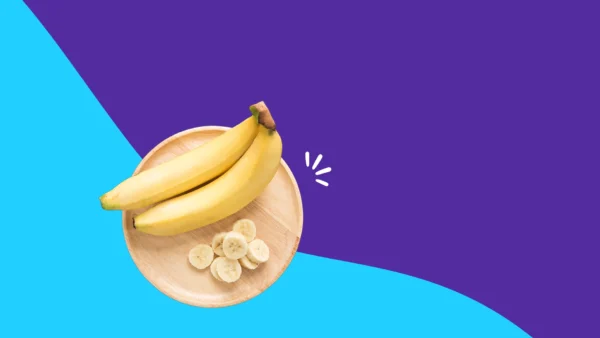Ozempic is a prescription medication containing the active ingredient semaglutide. The drug, made by Novo Nordisk, belongs to a class of medications called glucagon-like peptide-1 (GLP-1) receptor agonists, that help the body produce more insulin, decreases glucagon production, and slows stomach emptying, all of which can reduce blood glucose or sugar. Ozempic injections are one of three semaglutides approved by the Food and Drug Administration. The other two are Rybelsus, which comes in tablet form, and Wegovy, which is an injection like Ozempic.
“Ozempic is a prescription medication that was initially intended to treat adults with Type 2 diabetes,” says Toni Adamrovich, APRN, co-founder and chief of medicine at TB2.Health in Cuyahoga Falls, Ohio. Along with lowering blood sugar levels, adults with Type 2 diabetes taking Ozempic may lose weight and reduce their risk of serious heart problems, such as heart attack, stroke, or death. The drug may also be an alternative to bariatric surgery for people with obesity.
In the past year, it has become a popular treatment for weight loss, with many discussing the medication on social media. “Celebrities and influencers have endorsed Ozempic as a new weight loss treatment, causing a huge frenzy (and shortage) around the drug,” Adamrovich adds.
If you’re taking the GLP-1 medication Ozempic for weight loss, it’s recommended that you eat the best foods to improve your results.
Ozempic and weight loss: How the drug works in the body
Before discussing what healthy eating on Ozempic looks like, knowing how the drug works in your body for weight loss is essential.
“GLP-1 drugs like brand name Wegovy and Ozempic help control one’s appetite by increasing feelings of fullness and reducing hunger,” Adamrovich explains. “They do this by imitating the effects of the naturally occurring GLP-1 hormone in the body.” One hormone Ozempic imitates for weight loss is incretin. According to a review published in 2018, incretin hormones are secreted after nutrient intake and stimulate insulin secretion to counteract hyperglycemia.
According to a 2019 clinical review report, by mimicking natural GLP-1 hormones, Ozempic can cause glucose-dependent insulin secretion, leading to lowered glucagon secretion and slowing food movement through your stomach, also known as gastric emptying. “As a result, people taking these medications tend to eat less and lose weight,” Adamrovich says.
Despite its effects on weight loss, the FDA has not approved Ozempic for this use (unlike Wegovy), according to Raj Dasgupta, MD, a quadruple board-certified physician specializing in internal medicine, pulmonology, critical care, and sleep medicine in Los Angeles, California.
What can you eat on Ozempic?
Although there aren’t any strict diet rules to follow on Ozempic, you can get better weight loss results by eating a healthy, balanced diet. “It’s important to eat a balanced, healthy diet with lots of veggies, fruits, whole grains, lean proteins, and good fats,” Dr. Dasgupta says.
Ozempic diet plan tips
Below are some nutrition tips you can adopt while taking Ozempic and some examples of foods and meals you can eat to sustain weight loss.
1. Stick to a schedule.
Research shows that meal timing can be an effective way to address health problems like Type 2 diabetes, obesity, and heart disease. “Set a consistent meal schedule to follow and do not rely on hunger cues,” says Cesar Sauza, MS, RDN, a registered dietitian nutritionist and nutrition specialist at EH Project of Los Angeles, California. “Mindful eating is difficult when hunger cues are hindered due to a decreased appetite.”
Mindful eating, or conscious eating, is when you use all your senses to experience and enjoy your food. Researchers believe that by adopting this strategy, you will likely lose weight.
2. Opt for lean proteins and non-starchy vegetables first.
“Eat whole grains and starches only if still hungry,” Sauza says. According to a 2020 research study, a high daily intake of refined grains, such as white bread, white rice, cookies, and muffins, can increase your risk of heart disease and is linked to high blood pressure. Some examples of whole-grain foods and non-starchy vegetables you can eat include quinoa, brown rice, oats, and whole-wheat pasta.
3. Eat in small portions.
“Make sure to eat small portions regularly, as an empty stomach often may lead to nausea and further lack of appetite,” Sauza says. Also, not eating more than a serving size of food can help you manage your sugar, salt, fat, and calories.
4. Stay hydrated.
Be sure to drink enough water throughout the day. “Dehydration is often seen in patients taking semaglutide medications since their appetite is so decreased that they do not feel the urge to drink water,” Sauza explains. Research reveals that increased water intake is linked to weight loss, reducing the risk of obesity for diabetes patients.
5. Avoid processed, high-fat, and sugary foods and drinks.
“Limit added sugars from ultra-processed foods and especially added sugars from drinks,” Sauza says. Some examples of these specific foods include breakfast cereals, ice cream, and sugary drinks, and biscuits.
6. Ensure you’re meeting your daily calorie intake.
As you take Ozempic, ensure you’re not exceeding your recommended daily calorie intake. While it can vary from person to person, it’s recommended that women consume 1,500 or fewer calories per day, and men should consume no more than 2,000 calories per day to lose 1 pound per week. You can consult your registered dietitian if you’re unsure of your daily calorie limit.
7. Eat a diet high in fiber.
Consider eating high-fiber foods to improve your results while on Ozempic. Dietary fiber, often found in fruits, vegetables, whole grains, and legumes, can help you maintain a healthy weight by keeping you satisfied longer and being less energy-dense. Just be mindful that high-fiber foods tend to sit in your stomach longer, and so in some patients taking Ozempic, a high-fiber diet may cause nausea and heartburn symptoms.
Ozempic meal ideas
Here are some healthy meal ideas from experts Sauza and Adamrovich that you can consider during your weight loss journey while taking Ozempic.
For breakfast:
- Eggs with vegetables
- Plain Greek yogurt mixed with fruits and seeds
- Overnight oats or chia pudding with fruits and nuts
- Multi-grain toast with an avocado and a poached egg
For lunch:
- Turkey or chicken wrap
- Sandwich with one slice of bread
- A salad with protein added (animal- or plant-based)
- Chicken quinoa bowl with black beans, shredded cheddar, diced avocado, and lettuce
For dinner:
- Chicken breast with a green salad
- Salmon or tuna with roasted vegetables
- Ground turkey lettuce-wrapped tacos
- Reverse-seared filet mignon and roasted asparagus
Healthy snacks on Ozempic:
- Low-fat cottage cheese with fruit
- A small protein shake
- One serving of fruit with one serving of nuts or seeds
- Tuna with whole-grain crackers
For a personalized Ozempic diet plan for weight maintenance, it’s best to speak with a registered dietitian or nutritionist for assistance.
Foods to avoid on Ozempic
There are no strict guidelines on what you cannot eat on Ozempic. However, specific foods and drinks may affect weight loss results.
Here are some types of foods you may want to avoid or limit while creating a healthy eating plan for Ozempic, according to Adamrovich:
- Processed foods high in sugars, sodium, and unhealthy fats.
- Sugary foods and drinks, such as cakes, cookies, soda, cereals, pasta, and white bread.
- Spicy, greasy, and fried foods like hot wings, french fries, pizza, chips, and fast food.
- Certain vegetables like broccoli, cauliflower, cabbage, and Brussels sprouts should be eaten in moderation since they can cause bloating and gas.
“It’s not about cutting these foods out completely, but controlling how much and how often you have them to help manage your blood sugar levels better,” Dr. Dasgupta says. “Consulting with your doctor or a dietitian can give you more tailored advice.”
Bottom line
Although there’s no strict diet to follow while taking Ozempic, it works best for weight loss when combined with a healthy diet and exercise—habits that will help you maintain a healthy weight once you stop taking the drug. Regardless of whether you’re taking Ozempic or not, it is important to eat nutritious foods and avoid those that are overly processed or contain a lot of sugars, salt, and unhealthy fats.
Like any prescription medication, you are at risk of adverse side effects while taking Ozempic. The most common side effects of Ozempic include nausea, diarrhea, constipation, and hair loss. For more insight on healthy eating on Ozempic, consult a registered dietitian or healthcare provider for medical advice.
Sources
- Medications containing semaglutide marketed for type 2 diabetes or weight loss, Food and Drug Administration (2024)
- Ozempic (semaglutide), American Diabetes Association
- Incretin hormones: Their role in health and disease, Diabetes, Obesity and Metabolism (2018)
- Once-weekly Ozempic® (semaglutide) injection mechanism of action, NovoMEDLINK
- When to eat: The importance of eating patterns in health and disease, Journal of Biological Rhythms (2019)
- Mindful eating: The art of presence while you eat, Diabetes Spectrum (2017)
- Associations of cereal grains intake with cardiovascular disease and mortality across 21 countries in prospective urban and rural epidemiology study: Prospective cohort study, BMJ (2021)
- Food portions: Choosing just enough for you, National Institute of Diabetes and Digestive and Kidney Diseases (2021)
- Increased hydration can be associated with weight loss, Frontiers in Nutrition (2016)
- Calories, StatPearls (2022)
- Dietary fiber, Mayo Clinic (2022)
- Semaglutide (subcutaneous route), Mayo Clinic (2023)











